
REVIEW: Somewhere
While some may question what value a concept of individual authorship has within the collaborative medium of cinema, the work of Sofia Coppola provides ample material in defence of ‘auteur theory’. Elevating the director as centrally important to the creative process, auteurism presupposes that in the work of certain filmmakers there can be traced the repetition of a signature style, thematic preoccupation, or overriding worldview. With the release of her fourth feature Somewhere, Coppola confirms her auteurist aspirations.
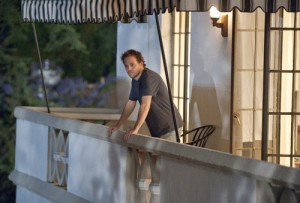 In each of her previous films, The Virgin Suicides (1999), Lost in Translation (2003) and Marie Antoinette (2006), Sofia Coppola has demonstrated a preference for narratives that deal with melancholy, liminality, and existential ennui. Despite the outward differences in setting and time period, Coppola’s protagonists are all marked by the same sense of stasis. Trapped by their surroundings and often emotionally inert, the characters in these films are rendered immobile by their longing for the past or uncertainty over the future.
In each of her previous films, The Virgin Suicides (1999), Lost in Translation (2003) and Marie Antoinette (2006), Sofia Coppola has demonstrated a preference for narratives that deal with melancholy, liminality, and existential ennui. Despite the outward differences in setting and time period, Coppola’s protagonists are all marked by the same sense of stasis. Trapped by their surroundings and often emotionally inert, the characters in these films are rendered immobile by their longing for the past or uncertainty over the future.
On that basis alone, Somewhere retraces familiar Coppola territory. Residing in a hotel, Hollywood actor Johnny Marco (Stephen Dorff) exists in a haze of drinking, parties and sexual encounters. When his ex-wife unexpectedly leaves their 11 year-old daughter Cleo (Elle Fanning) with him for an extended stay, Marco is prompted to confront his paternal responsibilities and the apparent meaninglessness of his celebrity lifestyle.
Spatially, Somewhere redeploys a key element of Coppola’s past work. Like the interspaces occupied by her previous characters (the home in The Virgin Suicides, the Park Hyatt in Lost in Translation and the Palace of Versailles in Marie Antoinette) Johnny Marco’s residence, the famed Chateau Marmont, contributes to the character’s indeterminate existence. In both the shots of his living areas, with its minimal accoutrements and unhung pictures propped against walls, or in his drifting between rooms and corridors, Coppola’s camera depicts Marco’s life as a temporary, ungrounded experience.
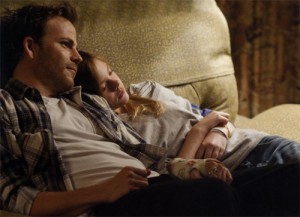 But the film emphasises stasis in other ways too. Drawing on a series of similar visual and kinetic motifs, Coppola’s approach to Somewhere is preoccupied with circular movement and repetition. The opening shot in which a black Lamborghini laps around the same stretch of road, the scenes in which twin dancers rotate around makeshift poles in Marco’s bedroom, the imagery of Cleo’s looping ice-skating routine, and even Johnny’s vehicular pursuit of an attractive blonde (reminiscent of Jimmy Stewart’s pursuit of Kim Novak in Vertigo) all reiterate a returning sense of motion. But like Johnny’s life, it’s all aimless momentum and no progress.
But the film emphasises stasis in other ways too. Drawing on a series of similar visual and kinetic motifs, Coppola’s approach to Somewhere is preoccupied with circular movement and repetition. The opening shot in which a black Lamborghini laps around the same stretch of road, the scenes in which twin dancers rotate around makeshift poles in Marco’s bedroom, the imagery of Cleo’s looping ice-skating routine, and even Johnny’s vehicular pursuit of an attractive blonde (reminiscent of Jimmy Stewart’s pursuit of Kim Novak in Vertigo) all reiterate a returning sense of motion. But like Johnny’s life, it’s all aimless momentum and no progress.
While Somewhere may consolidate Coppola’s reputation as a thoughtful filmmaker, it is in many ways her least accomplished (and least ambitious) work. Putting aside the uncharacteristically trite way in which Coppola ends the film, the main drawback here is the unimaginative selection and presentation of events encountered by Johnny and Cleo. In a manner akin to the routine experiences of her main character, audiences who’ve seen Coppola’s previous films will undoubtedly find much of Somewhere uncannily familiar.
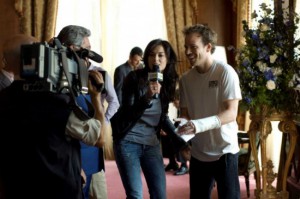 On a number of occasions Coppola veers perilously close to simply reproducing sequences from her earlier work. An impromptu interview with an Italian reporter that plays off language barriers, an over-the-top foreign awards ceremony, a moment of tenderness shared over dessert and television, and a parodic press conference sequence could all be cloned from scenes within Lost in Translation.
On a number of occasions Coppola veers perilously close to simply reproducing sequences from her earlier work. An impromptu interview with an Italian reporter that plays off language barriers, an over-the-top foreign awards ceremony, a moment of tenderness shared over dessert and television, and a parodic press conference sequence could all be cloned from scenes within Lost in Translation.
Undoubtedly, one of the benefits bestowed upon the auteur filmmaker is that such similarities can ultimately be defended on the grounds of artistic consistency, or an ongoing exploration with a theme or idea. Perhaps for that reason, Somewhere is more likely to be termed a ‘companion piece’ than a work of self-plagiarism. But the auteur tag is equally burdensome, imposing heightened expectations upon the works of those directors so labelled. That is something Coppola may be wise to consider before embarking upon her next project.
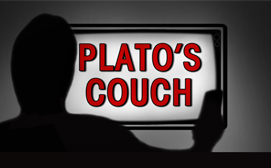

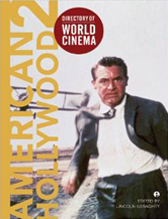

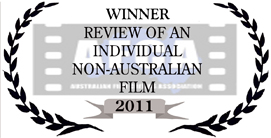
RSS feed for comments on this post. TrackBack URI